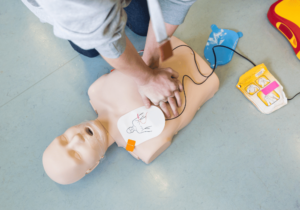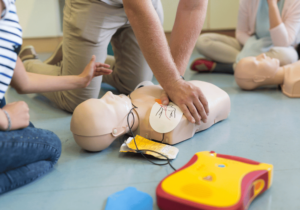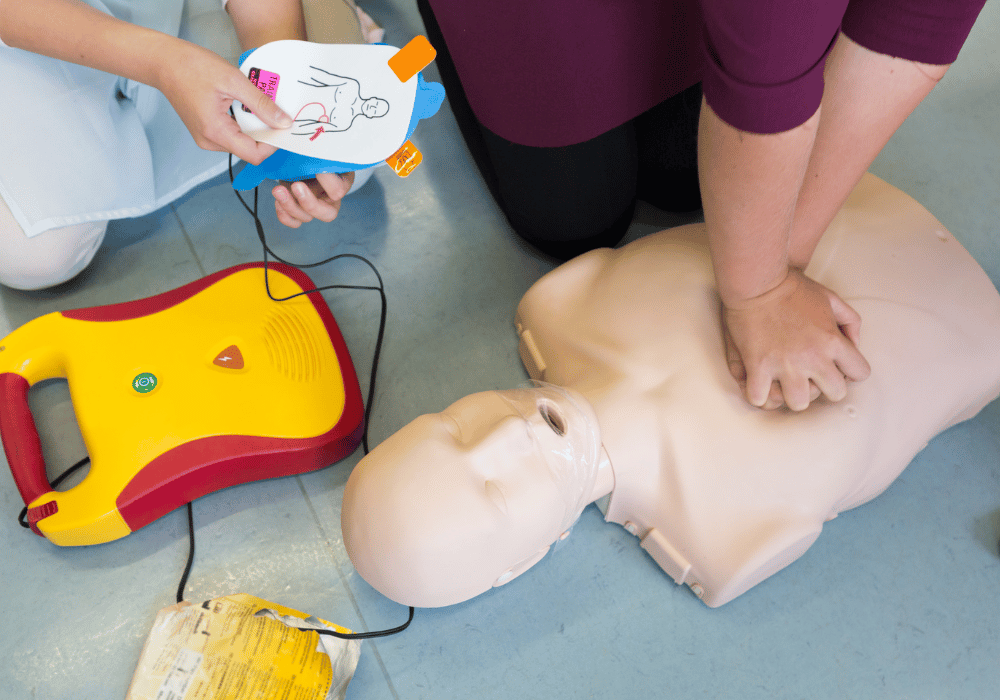If you or someone you know has a heart condition, it’s important to be prepared in case of an emergency. Automated external defibrillators (AEDs) are life-saving devices that anyone can use to help during a cardiac arrest. Here are answers to some common questions about AEDs.
What is an AED and how does it work?
 An Automated External Defibrillator (AED) is a device used to shock the heart back into a normal rhythm when someone suffers from sudden cardiac arrest. It is programmed to evaluate the person’s ECG rhythm and determine if electric shock is needed for rescues. Life-saving shock can be administered in just two easy steps: attaching the pads to the body, then pushing one button. These simple steps could mean the difference between life and death for those suffering from cardiac emergencies.
An Automated External Defibrillator (AED) is a device used to shock the heart back into a normal rhythm when someone suffers from sudden cardiac arrest. It is programmed to evaluate the person’s ECG rhythm and determine if electric shock is needed for rescues. Life-saving shock can be administered in just two easy steps: attaching the pads to the body, then pushing one button. These simple steps could mean the difference between life and death for those suffering from cardiac emergencies.
Why are AEDs important to have?
Automated external defibrillators (AEDs) are life-saving devices that can provide a crucial shock to restart a failing heart. They are especially important in public places such as schools and workplaces, where large groups of people of all ages congregate and the chances of a cardiac emergency occurring are greater. When needed, one minute is all it takes to attach an AED to an affected person’s chest, assess their condition, and deliver a shock if necessary – far more rapid and efficient than most emergency situations involving rescue personnel and vehicles. Having AEDs publicly accessible also serves to empower untrained bystanders who witness an incident; with the proper training on how to use the device efficiently, it encourages them to become motivated lifesavers who will not hesitate to help in life-threatening situations.
How do you know if someone needs an AED shock or not?
An automated external defibrillator (AED) can be a life-saving resource in emergency cardiac situations, but without the proper knowledge, it is difficult to know when to use one. The most reliable way to determine whether someone needs an AED shock is by assessing their pulse and by using a specialized device called an electrocardiogram (ECG). If the ECG detects that the heart rhythm is abnormal and does not have a normal beat, then it is likely that the patient will need a shock from an AED. However, if the ECG indicates that the heart rhythm has returned to normal or that the patient is simply not experiencing any chest pain, then it should be safe not to proceed with defibrillation. Using an ECG beforehand is key in determining whether or not an AED shock should be administered.
Can just anyone use an AED, or do you need training first?
 According to the National Heart, Lung, and Blood Institute, anyone can use an Automated External Defibrillator (AED) to help save a life. AEDs are designed to allow people with no training necessary to perform Early Defibrillation on someone suffering a sudden cardiac arrest. However, many organizations such as first responders, medical personnel and corporate entities are strongly encouraged to receive formal training regarding the proper use of the AED and how to recognize the signs of cardiac arrest. Taking the initiative to learn proper usage techniques for an AED could be the difference between life and death in an emergency situation.
According to the National Heart, Lung, and Blood Institute, anyone can use an Automated External Defibrillator (AED) to help save a life. AEDs are designed to allow people with no training necessary to perform Early Defibrillation on someone suffering a sudden cardiac arrest. However, many organizations such as first responders, medical personnel and corporate entities are strongly encouraged to receive formal training regarding the proper use of the AED and how to recognize the signs of cardiac arrest. Taking the initiative to learn proper usage techniques for an AED could be the difference between life and death in an emergency situation.
Where can I purchase an AED device?
AEDs are readily available for purchase from a variety of sources including pharmacies, medical supply stores, and online retailers. The cost of an AED varies depending on the device. You can find all kinds of AEDs online for sale at CPR Depot today!

